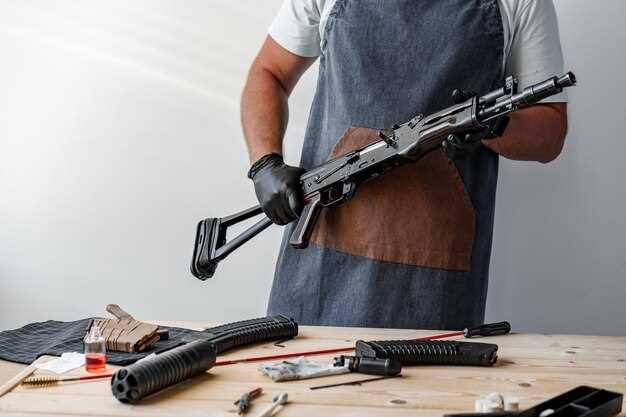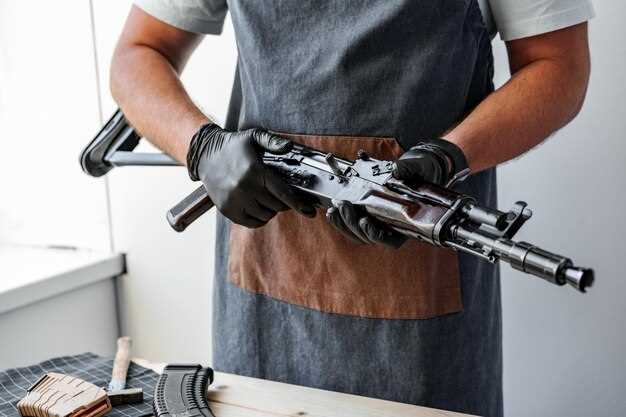
Ensuring the proper cleaning and care of your firearms is essential for their longevity and performance. Regular maintenance not only enhances the reliability of your gun, but it also ensures your safety and the safety of those around you. A well-maintained firearm functions optimally and can improve accuracy, making it crucial for any responsible gun owner to understand the necessary steps for care.
The process of cleaning your firearm involves more than just a quick wipe-down. It requires a thorough understanding of the different components and the specific cleaning materials needed for each type of gun. By familiarizing yourself with the effective techniques and tools available, you can develop a routine that will keep your firearm in excellent condition.
In this guide, we will explore the best practices for cleaning and maintaining different types of firearms. We will cover essential tools, recommended cleaning agents, and detailed step-by-step instructions to ensure your gun remains reliable and safe to use. Whether you are a seasoned shooter or a novice, this guide will equip you with the knowledge needed for comprehensive firearm care.
Choosing the Right Cleaning Supplies for Your Firearm
Selecting the appropriate cleaning supplies for your firearm is crucial for maintaining its performance and longevity. The right tools will help ensure that you effectively remove dirt, carbon buildup, and residue without causing damage to the firearm.
First, it’s essential to choose a quality cleaning solvent specifically designed for firearms. These solvents effectively break down fouling and residues that accumulate from the firing process. Look for products that are safe for the specific materials of your firearm to prevent corrosion or wear.
Next, invest in a set of cleaning rods, brushes, and patches. Cleaning rods should be made from materials that are safe for your firearm’s barrel, such as aluminum or brass. Brushes come in various materials, including nylon and bronze, and should be selected based on the type of firearm. For example, bronze brushes work well for tougher fouling, while nylon brushes are gentler for delicate surfaces.
Don’t forget about the importance of gun oils and lubricants. Applying the right oil can protect metal surfaces from rust and wear, ensuring smooth operation. Choose a lubricant specifically formulated for firearms to ensure optimal performance and protection.
Additionally, consider acquiring cleaning mats or work surfaces that will keep your area organized and protect your firearm during the cleaning process. A well-organized workspace allows for efficient and thorough cleaning, reducing the risk of losing small parts or accessories.
Finally, regular inspections of your cleaning supplies are important. Make it a habit to check for any worn-out or damaged items that may compromise your cleaning efforts. By using the right supplies and keeping them in good condition, you can ensure that your firearm receives the care it deserves.
Step-by-Step Process for Disassembling and Cleaning Different Types of Guns

Proper care and maintenance of your firearms are essential for their longevity and reliable performance. The following sections outline the step-by-step process tailored for different types of guns: handguns, rifles, and shotguns.
Handguns:
1. Ensure the firearm is unloaded. Check the magazine and the chamber to confirm there are no rounds present.
2. Remove the magazine by pressing the release button. Set it aside.
3. Depending on the make, either pull the slide back and release it or disengage a slide lock. This allows you to take the slide off.
4. Clean the barrel with a cleaning rod and appropriate brush. Use patches to remove residue.
5. Wipe down the frame, slide, and other parts with a microfiber cloth and gun cleaner.
6. Lubricate moving parts lightly to ensure smooth operation.
7. Reassemble the handgun by reversing the disassembly steps and perform a function check.
Rifles:
1. As with handguns, verify that the rifle is unloaded by checking both the magazine and the chamber.
2. Remove the bolt and any detachable parts according to the manufacturer’s instructions.
3. Use a cleaning rod with a bore brush to clean the barrel, moving from the chamber to the muzzle to avoid damage.
4. Clean the bolt and action with a suitable solvent and brush, ensuring all dirt and residue are removed.
5. Apply a light coat of oil to the moving parts and wipe excess off to prevent buildup.
6. Reassemble the rifle and perform a safety check to confirm it operates correctly.
Shotguns:
1. Start by ensuring the shotgun is completely unloaded and the chamber is clear.
2. Detach the barrel from the receiver, following the manufacturer’s disassembly guide.
3. Use a bore snake or cleaning rod to clean the barrel thoroughly.
4. Scrub the receiver and action using a brush and solvent, emphasizing hard-to-reach areas.
5. Wipe all parts with a cloth, ensuring no moisture remains before lubricating lubrication points appropriately.
6. Reassemble the shotgun parts and double-check that the action functions smoothly.
Regular disassembly and cleaning are imperative for the safe operation of firearms. Always follow the manufacturer’s guidelines for specific models and types of guns for optimal care practices.
Routine Maintenance Tips to Enhance Longevity and Performance

Regular cleaning of your firearm is essential for maintaining its accuracy and reliability. After each use, inspect the bore and action for any residue or buildup that may affect performance. Use appropriate cleaning solutions and tools designed specifically for your firearm type to ensure thorough cleaning without causing damage.
Routine care involves lubricating moving parts with high-quality oils that reduce friction and prevent rust. Apply lubricant sparingly, as excess oil can attract dirt and debris, leading to malfunctions. Follow the manufacturer’s recommendations for lubrication intervals to keep your firearm in optimal condition.
Check all components, including the springs, trigger, and magazine, for wear or damage. Replace any worn parts promptly to enhance safety and ensure consistent performance. Keeping spare parts on hand can also reduce downtime and maintain the functionality of your firearm.
Store your firearm in a cool, dry place to minimize exposure to moisture, which can lead to corrosion. Consider using a dehumidifier or silica gel packets in your storage area for added protection. Utilizing a hard case or safe also helps protect against physical damage and unauthorized access.
Lastly, develop a routine maintenance schedule that includes a thorough inspection and cleaning at regular intervals, even if the firearm has not been fired. Consistent care will greatly enhance the longevity of your firearm and ensure optimal performance every time you use it.


